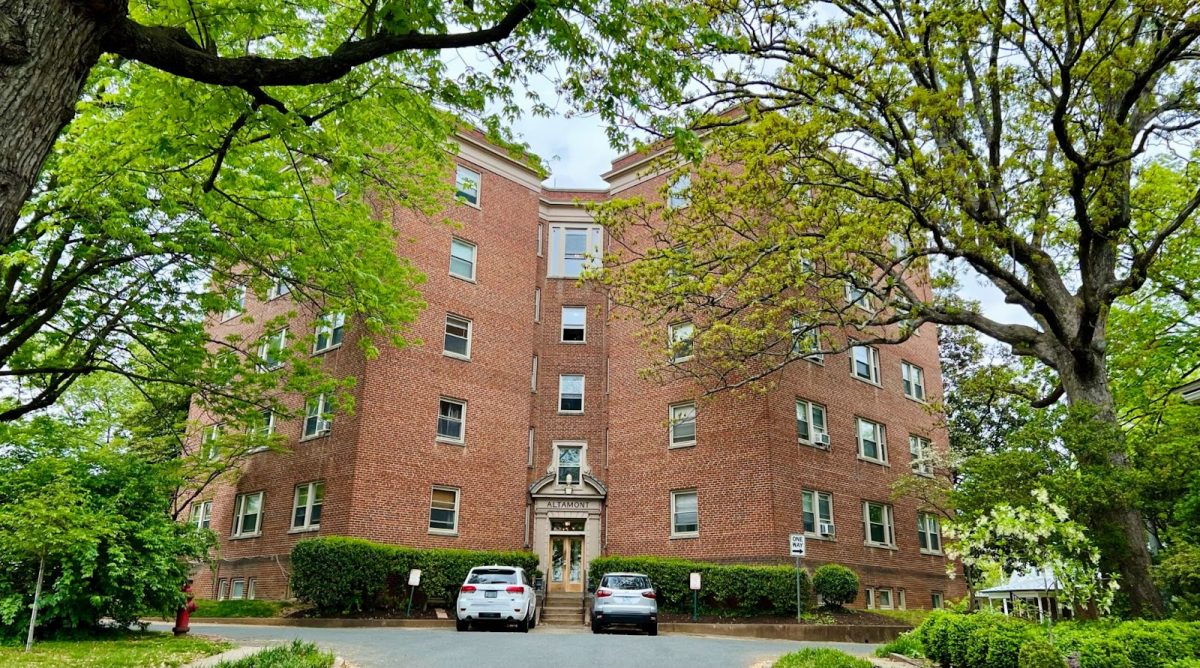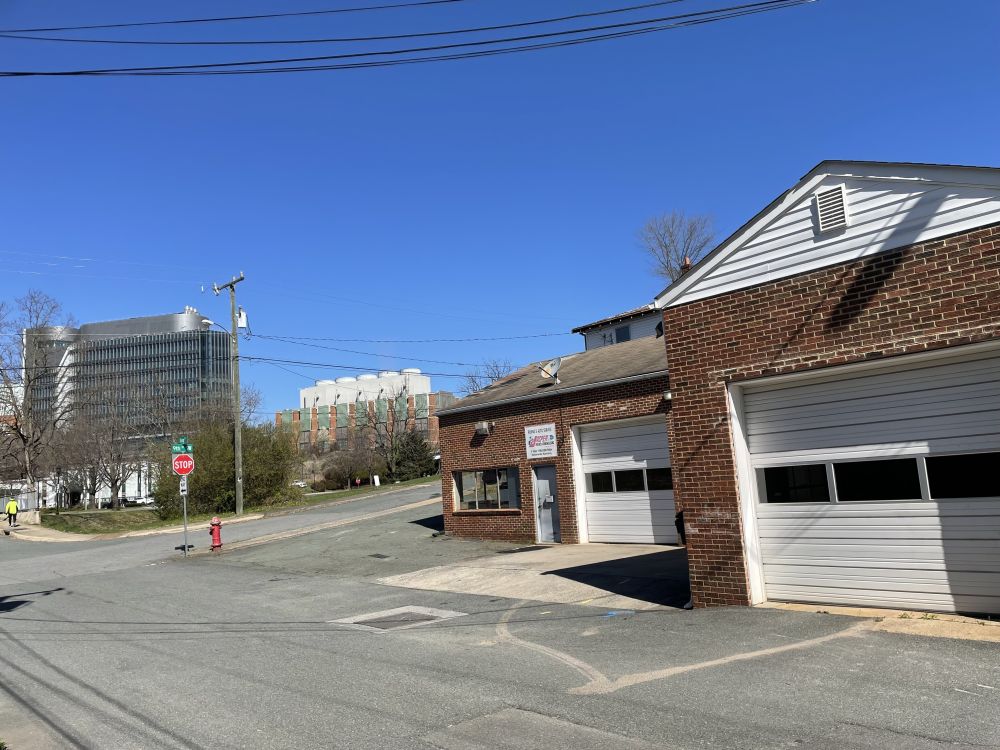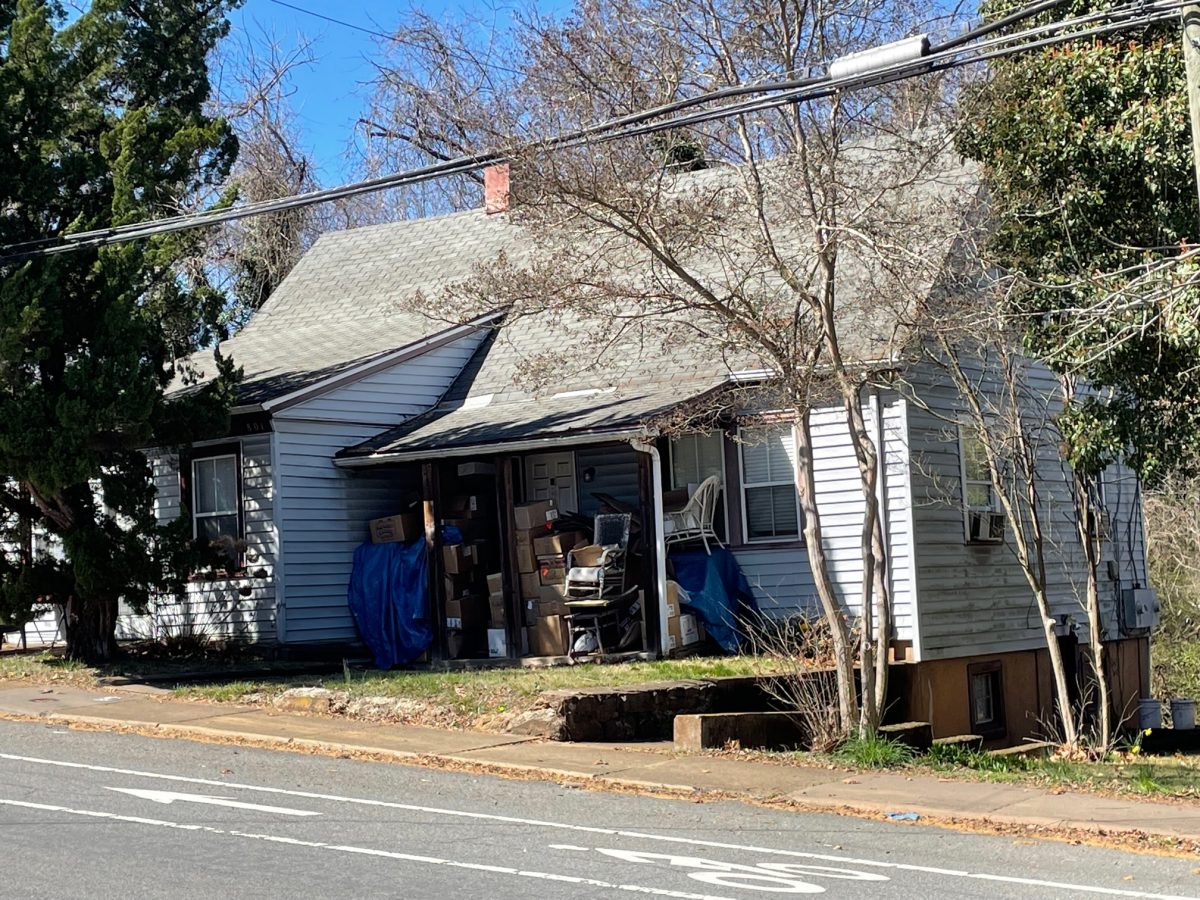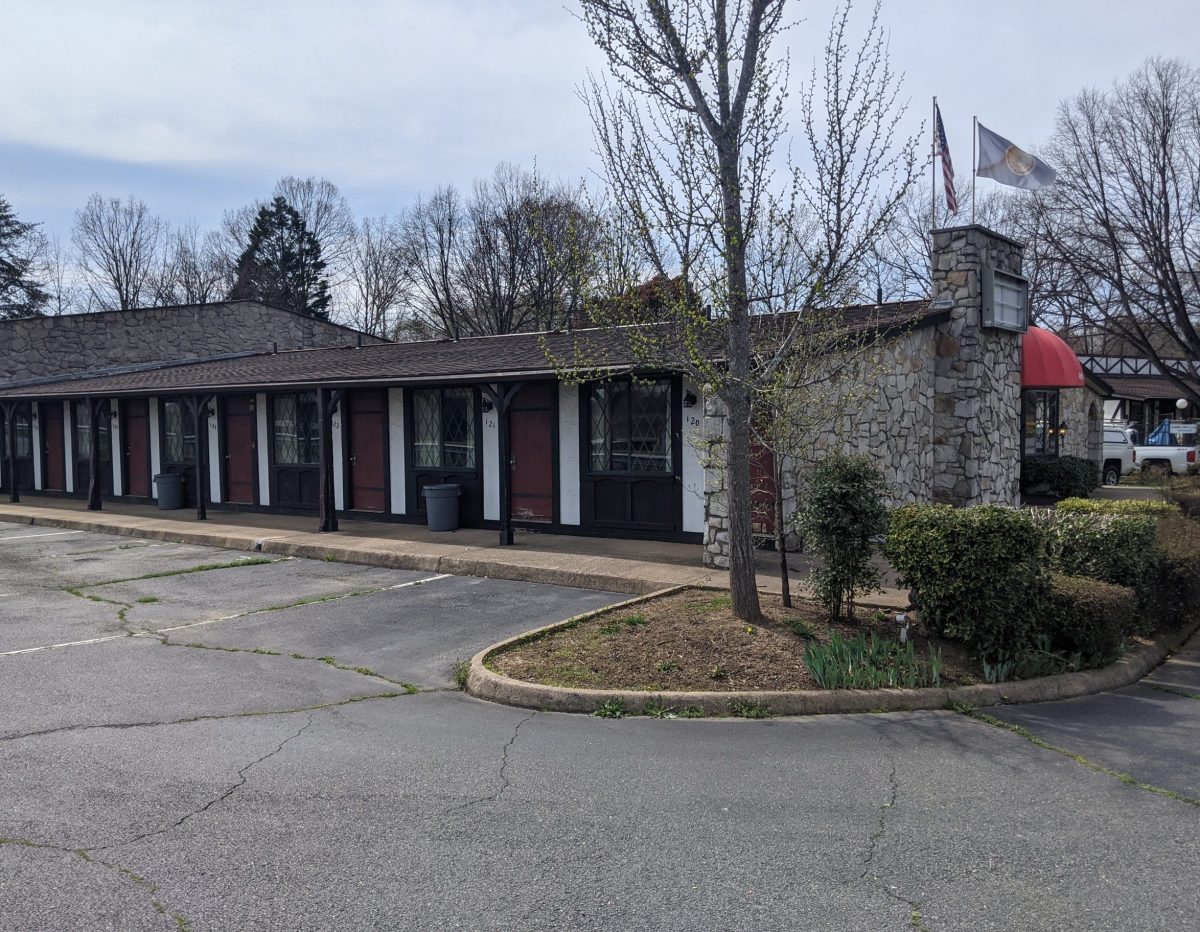On Tuesday, April 30, representatives from the University of Virginia Alumni Association will publicly present a site plan for “a new Alumni Hall” at the corner of Emmet Street and Lewis Mountain Road.
The Alumni Association is a separate entity from the university, and pays property taxes to the City of Charlottesville. Unlike UVA, it also must comply with the city’s land-use regulations, which means paying $6,565 in fees for a recent application.
A preliminary site plan was filed on August 3, 2023, under the former zoning, and this is one of several projects that is still being considered under the old rules that include site plan conferences. (That conference will be held in the Neighborhood Development Services conference room in City Hall on Tuesday, August 30, 2024, at 9am.)
Under the city’s new Development Code, the zoning for the 3.15 acre property is Residential-A, meaning redevelopment would be difficult. However, the replacement building is allowed due to an existing special use permit for a private club that was first approved in 1980 and last updated in 2016.
“The applicants may redevelop their property for the new building, so long as they comply with all conditions of the existing special use permit,” says Dannan O’Connell, a city planner coordinating the review.
O’Connell says the site plan is preliminary and could change depending on feedback.
The UVA Alumni Association has been in the current building since 1936, when it moved in to what was then Kappa Phi House. For many years, the city used Alumni Hall for a voting precinct, but a new electoral map adopted last year ended that practice. The association uses the building for hundreds of events throughout the year, including home football game parties, and the facility is often rented for private events.
The Alumni Association has hired Centerbrook Architects and Planners to take the project through the planning process. The Connecticut-based firm recently designed the Karsh Alumni and Visitors Center at Duke University.
According to the preliminary site plan, the existing two-story building will be completely removed, but some of the signature trees on the property will be kept. The new building would be a maximum of 35-feet tall, with a max footprint of 29,075 square feet.
If the project proceeds, it will be part of an era of transformation along Emmet Street. Just to the south, construction is nearing completion on the four-story Contemplative Commons, including a new pedestrian bridge to Newcomb Hall. Even further to the south, a private project called Verve Charlottesville has been approved by the city and will see several dozen residential units at Woodrow Apartments be replaced with an apartment with 446 new units.
The project will not include an adjacent property on Lewis Mountain Road that’s owned by the University of Virginia Foundation, upon which two single-family homes currently stand.
The leader of the Alumni Association said the current building does not meet the needs of the organization.
“Our vision is to build a wholly new facility on the same parcel of land that can serve the needs of our ever-evolving alumni, UVA, and Charlottesville community,” said Lily West, the associaiton’s president & CEO “We are calling it “A Home for Every Hoo.”
West said there’s a lot of work to be done to make the project a reality.









